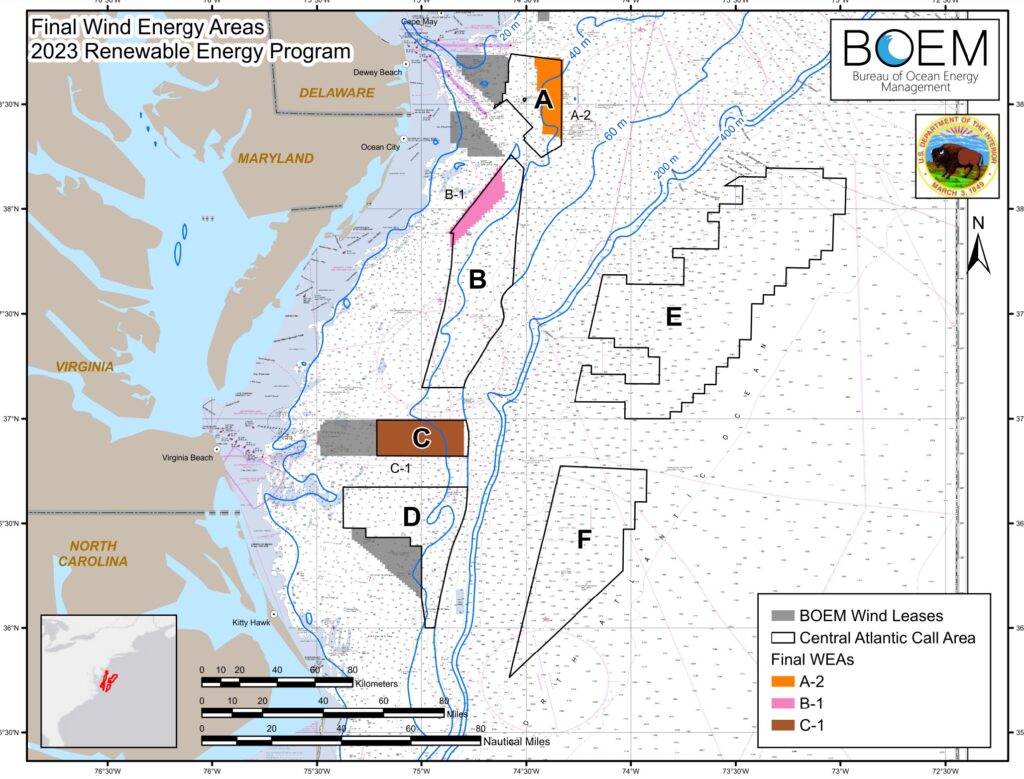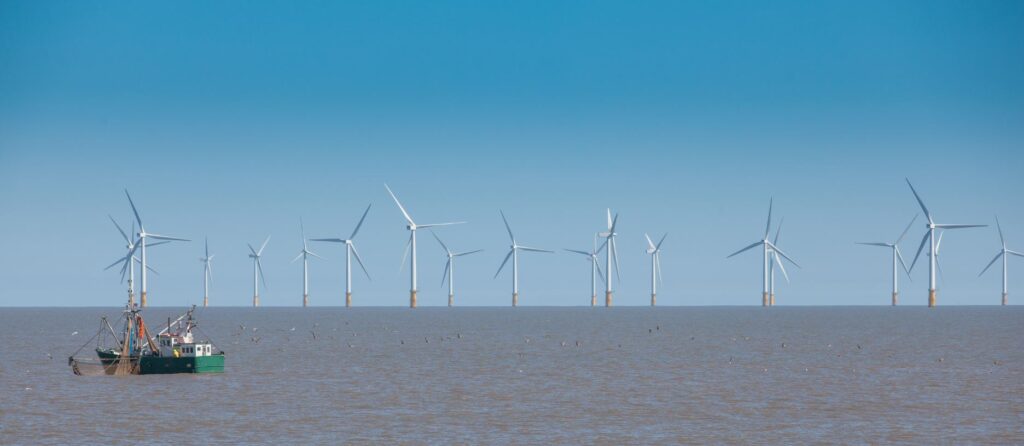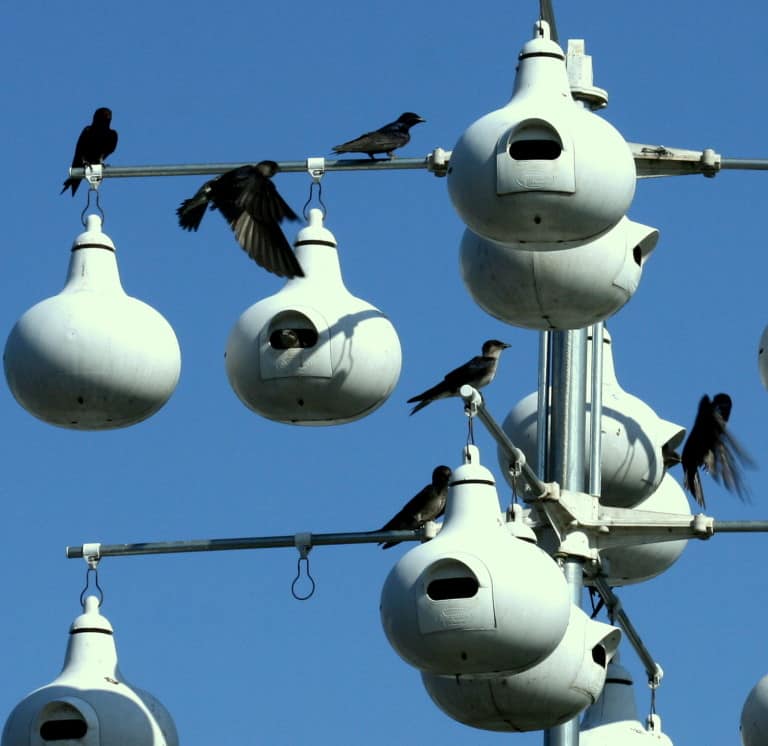Three new possible offshore wind sites have been chosen for development off the Delaware, Maryland and Virginia coasts. Totaling 356,550 acres, the Wind Energy Areas are expected to support 4-8 gigawatts of energy production–enough to power nearly two million homes by some estimates.
The federal Bureau of Ocean Energy Management (BOEM) says the locations were chosen “following extensive engagement and feedback from states, Tribes, local residents, ocean users, federal government partners, and other members of the public.” These Wind Energy Areas are part of the Biden-Harris administration’s goal of deploying 30 gigawatts of offshore wind energy capacity by 2030.
The Wind Energy Areas are to be located 26 nautical miles from Delaware Bay, 23.5 nautical miles off Ocean City, Maryland, and 35 nautical miles from the mouth of the Chesapeake Bay offshore of Virginia. You can see the map of the finalized locations below and on BOEM’s website. The pink, orange and dark red areas are the new lease sites.

BOEM published its Notice of Intent on Aug. 1 to prepare an environmental assessment of potential impacts from offshore wind leasing in the chosen Wind Energy Areas, kicking off a 30-day public comment period. BOEM says it partnered with NOAA to develop a “comprehensive, ecosystem-based ocean planning model” to choose the lease sites. There was a wide variety of possible concerns as BOEM chose locations.
The bureau had to look at potential conflicts with a United States Coast Guard safety fairway, commercial fishing, Department of Defense activities, a NASA danger zone, and marine habitat areas.
BOEM’s director, Liz Klein, says, ““BOEM values a robust and transparent offshore wind planning process, which requires early and frequent engagement with Tribal governments, the Department of Defense, NASA, other government agencies, and ocean users.”
However, there has been past concern about a rash of migrating whale deaths along the Atlantic coast and the possible impact of wind farm activities on whales. NOAA maintains that no whale deaths have been officially linked to offshore wind activity.
The three final Wind Energy Areas were chosen from eight draft areas announced in 2022 that spanned 1.7 million acres in North Carolina, Virginia, Maryland, and Delaware. The final areas are in comparatively shallow water, BOEM says, and there may be further Wind Energy Areas identified in deep water areas for more leasing in the future once those areas are studied.
To submit a comment for the environmental assessment BOEM says you can send it:
• Through the regulations.gov web portal: Navigate to http://www.regulations.gov and search for Docket No. BOEM–2023–0034 to submit public comments and view supporting and related materials available for this notice. Click on the “Comment” button below the document link. Enter your information and comment, then click “Submit Comment”; or
• By U.S. Postal Service or other delivery service: Send your comments and information to the following address: Bureau of Ocean Energy Management, Office of Renewable Energy Programs, 45600 Woodland Road, Mail Stop VAM–OREP, Sterling, VA 20166.
Comments must be received by August 31, 2023.
BOEM stresses that wind energy leases don’t authorize activities on the Atlantic Outer Continental Shelf, where these sites are located. Instead, a lease allows a company the exclusive right to submit plans for that site. Once the sites are leased out to wind energy companies, the environmental impacts of any proposed projects would be assessed before the bureau approves construction and operations plans.
-Meg Walburn Viviano




